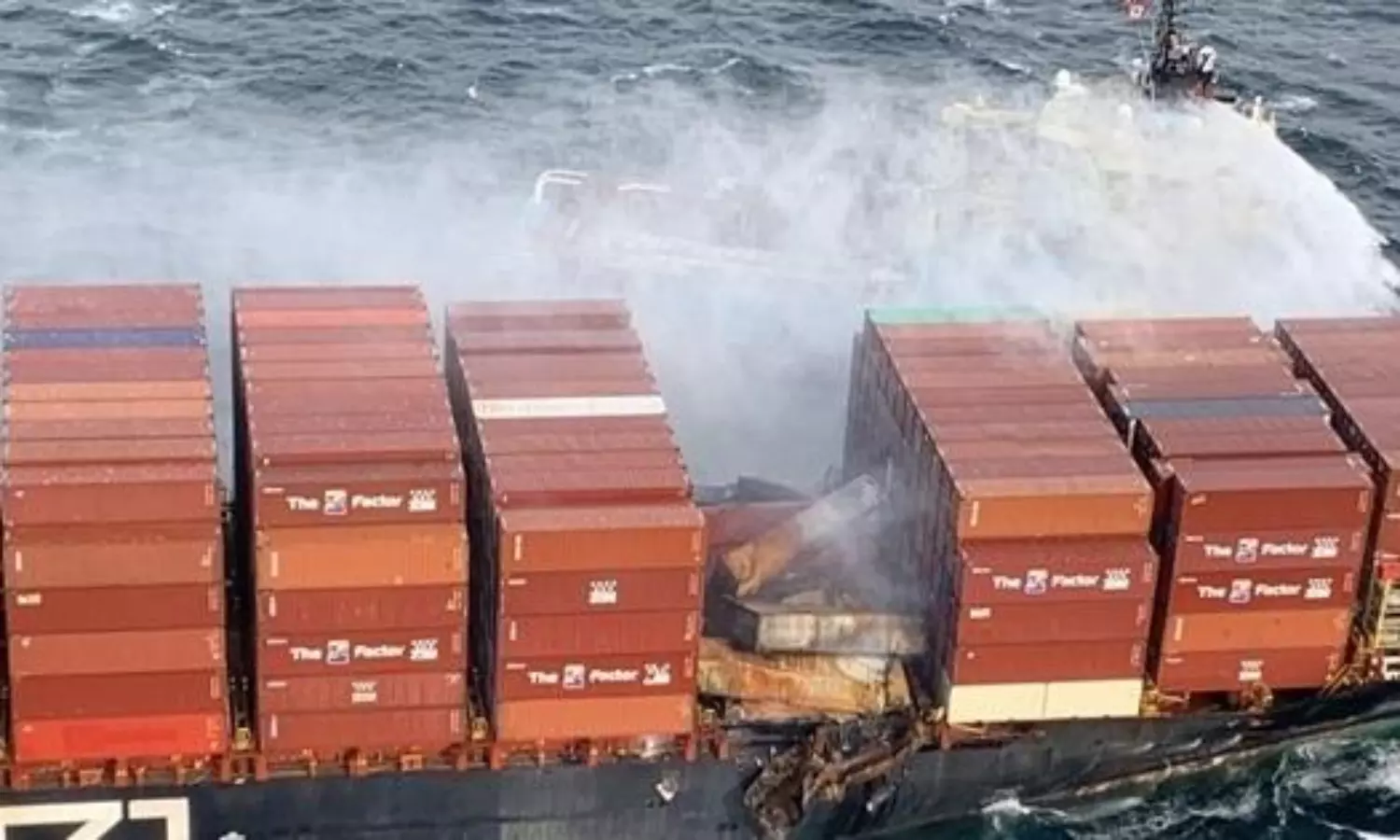Safety concerns rise over a stranded ship carrying dangerous cargo
Storing hazardous substances presents challenges, especially in importing, exporting, and distributing these materials.

The Ruby, a Maltese-flagged bulk carrier, has been at the center of safety concerns since September 2024, after being stranded near the Dover Strait with 20,000 tonnes of volatile ammonium nitrate on board. The ship's hazardous cargo poses significant risks to health, safety, and the environment, sparking fears of a catastrophic event. The Ruby's ordeal began after sustaining storm damage, prompting European ports, including Lithuania, to turn it away due to the dangerous nature of its cargo. British coastguards eventually deemed the ship seaworthy, allowing it to dock at Great Yarmouth on October 28.
However, the Ruby's situation eerily echoes the devastating 2020 Beirut blast, which was triggered by the detonation of approximately 2,750 tonnes of ammonium nitrate stored in a port warehouse. The explosion killed over 200 people, injured thousands, and displaced hundreds of thousands from their homes.
The Ruby's situation highlights the challenges of transporting hazardous materials. These substances require strict regulations to minimise risks during storage and transportation. Classification into nine categories helps ensure safety, including explosives, gases, flammable liquids, and toxic materials.
Rahul Narayan of Chandhiok & Mahajan emphasised the importance of risk mitigation strategies, citing India's National Oil Spill Disaster Contingency Plan (NOSDCP) and the European Union's Environmental Liability Directive (ELD).
Hazardous cargoes are classified into nine categories based on the specific risks they pose during transport and storage. These classifications are essential for ensuring safety and minimising accidents. Some of these are explosive materials. Gases, such as methane and chlorine, flammable liquids like gasoline, flammable solids, such as coal, Oxidising substances and toxic and infectious materials pose poisoning and biohazard risks. Radioactive materials emit harmful radiation, and corrosive substances cause severe damage.
Storing hazardous substances presents challenges, especially in importing, exporting, and distributing these materials. Mishandling can lead to severe legal, financial, and safety repercussions. Therefore, it is critical for businesses to establish modern storage facilities that adhere to strict safety regulations to ensure the safe management of hazardous cargo.
“To reduce risk, hazardous cargoes need to be stowed appropriately, i.e., away from heat sources or close to other incompatible products,” stated Simon Heaney, Senior Manager, Container Research at Drewry. “Shipping hazardous cargoes adds significant complexity and cost. On top of that, hazardous materials require specialised insurance policies with clear terms on liability,” he added.
Ships carrying hazardous cargo are often referred to as "timebombs" because of the immense danger they pose if not properly handled or if accidents occur. The term "timebomb" evokes the image of a potential disaster waiting to happen, as these ships carry materials that can cause explosions, fires, or environmental damage.
The risk is magnified in situations where a vessel is stranded or cannot find a port willing to accept it, as was the case with the Ruby. Such ships remain at sea for extended periods, raising the likelihood of accidents due to deteriorating conditions, potential equipment failures, or insufficient crew safety measures. Moreover, in busy shipping lanes or near densely populated areas, an explosion or leak could lead to mass casualties, environmental devastation, and financial loss.
Quarterly training programmes for truck drivers and handlers can ensure they understand the risks and handling requirements of hazardous materials. Investing in training reduces excursions and damages, ultimately benefiting the organisation.
“Managing hazardous cargo at sea presents legal and operational challenges for ports and shipping companies, including liability and compliance with international regulations like the IMDG (International Maritime Dangerous Goods) Code and SOLAS (Safety of Life at Sea). Compliance can be complex and requires coordination among regional teams. Operational challenges include specialised infrastructure, equipment, and inadequate training, while environmental harm can result from minor lapses,” added Rahul Narayan of Chandhiok & Mahajan.
The incident highlights the need for proactive measures and careful oversight in hazardous cargo management. By prioritising safety, businesses can mitigate potential dangers and ensure responsible transportation of hazardous substances.


